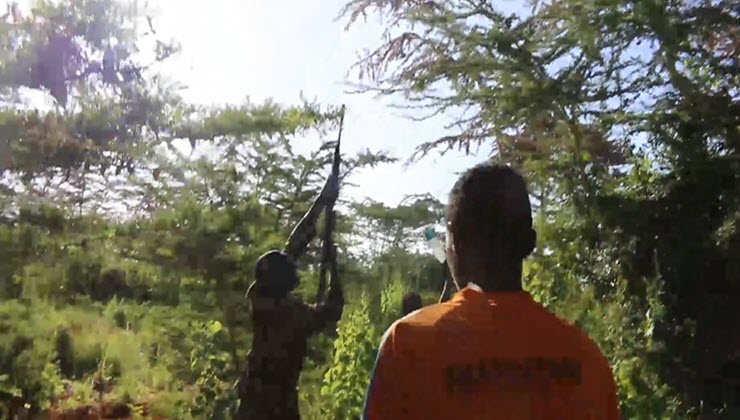Aerial spraying teams have been dispatched to northeastern counties hit by locust invasions, the national government Spokesman Cyrus Oguna announced on Saturday, January 4, 2020.
“Ground locus support teams to monitor and create awareness to local communities have been mobilised and deployed to the affected counties. These teams will in addition also undertake survey and guide aerial spraying teams,” said (Rtd) Colonel Oguna.
The aerial is set to start on Saturday, said the Government Spokesperson.
“Additionally, 3,000 litres of chemicals for spraying were acquired last week and have been dispatched to the affected counties. The aircraft will be positioned in Wajir from where all the affected counties shall be sprayed.
Distribution of hand-held sprayers and protective gears have been done in Wajir, Marsabit and Isiolo, said Oguna.
“We wish to assure that the chemicals that will be used have been tested and authorised for locust control hence not harmful if used according to their guidelines,” the Govt Spokesman said.
The government intervention came after the media highlighted the desperate attempts northeastern counties’ residents took to chase away the huge swarm of locust.
The locusts invaded from Somalia spreading to Mandera, Wajir, Marsabit and Isiolo counties.
In a video shot by K24 TV reporter on January 2, 2020, two police officers were seen shooting at the huge swarms of locusts with G3 rifles while local residents were beating tin cans to chase away the pests.
Besides shooting at the locusts, the officers also seemed to have lobbed teargas at the pests.
Locals with motorcycles also honked at the huge swarms in a desperate attempt to stop them from clearing vegetation and crops.
According to the locals, the swarms are devouring at least 150km square every 24 hours and are now heading to Marsabit and Isiolo counties.
On January 1, 2020, the Mandera County government appealed for assistance from the national government and development partners wake of locust invasion, saying that it lacks the capacity to fight off the pests single-handedly.
The county which launched exercise to spray the pests with insecticides said the invasion is an international disaster, having devoured vegetation in Somalia and Ethiopia.
Mandera Agriculture minister Mohammed Johara said the locusts have also destroyed crops are fast spreading in Wajir and Marsabit counties after migrating from Somalia.
He called on the national government and other development partners to aid the northeastern counties tame the devouring pests.
Johara said the county lacks the capacity to fight the locust invasion single-handedly and needs assistance from the national government.
In southern Somalia where the locusts invaded from, farmers used heavy machine guns — PKM rifles— in desperate attempts to save their crops.
The Somalia invasion was the largest locust infestation in 25 years, according to the Telegraph.
Since July 2019, swarms of Desert Locusts from nearby Yemen invaded vast swathes of the Horn of Africa.
A typical swarm can contain up to 150 million insects per kilometer square.
Each locust can grow up to 4.3 inches long and travel up to 152 kilometres a day depending on the wind.
Every day, an average swarm can consume the equivalent of a year’s worth of food for 2,500 people.










